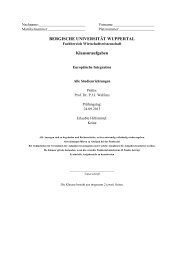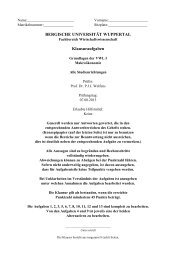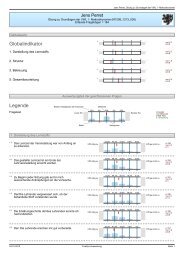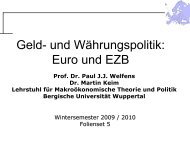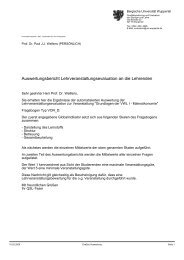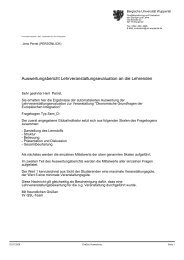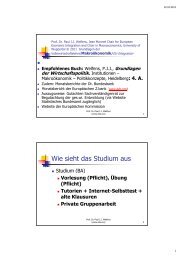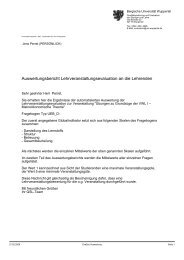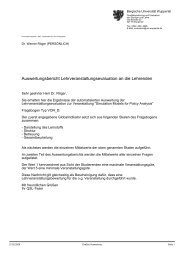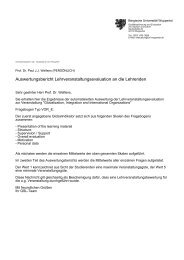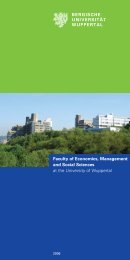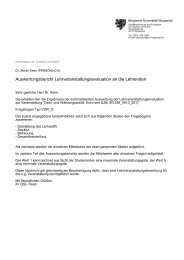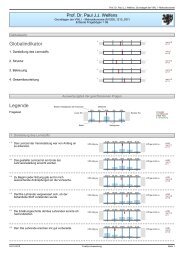UNIVERSITÄT POTSDAM - Prof. Dr. Paul JJ Welfens
UNIVERSITÄT POTSDAM - Prof. Dr. Paul JJ Welfens
UNIVERSITÄT POTSDAM - Prof. Dr. Paul JJ Welfens
Create successful ePaper yourself
Turn your PDF publications into a flip-book with our unique Google optimized e-Paper software.
the potential of ICT dynamics by taking a closer look at advanced US states and advanced<br />
EU countries (e.g. Sweden, Finland, the UK, Ireland, Germany, France, and the<br />
Netherlands). A serious problem in the context of such benchmarking analysis could be<br />
that Euroland’s ICT dynamics are rather weak for reasons related to problems in telecommunications<br />
competition (with international intra-Euroland calls being several<br />
times more expensive than in the US – taking a look at long distance rates) or in labor<br />
markets where a declining wage drift in several EU countries reduces the ability of expanding<br />
firms to attract skilled labor away from declining sectors – and this in a period<br />
in which the full exploitation of the New Economy growth effects would require accelerated<br />
intersectoral relocation of labor. In Germany effective wage rates increased in<br />
the period 1991-2000 by 28% while the negotiated wage rate increased by 40.9%.<br />
These figures – based on Deutsche Bundesbank – indicate that labor market rigidity<br />
and lack of wage drift (and wage dispersion) could be part of the relatively low ICT<br />
dynamics in Germany and possibly in some other countries in the euro zone as well.<br />
Recent Analysis<br />
According to DAVERI (2001) the growth contribution differs considerably across<br />
OECD countries (see subsequent table). Daveri also finds that in terms of the share of<br />
IT capital (augmented by the software component), the EU faced considerable differences.<br />
In 1999 IT capital accounted for roughly 6% of overall value-added in Sweden<br />
and the UK, 5% in Ireland and the Netherlands, but only about 3% in Germany, Italy,<br />
France, and Spain, with Portugal and Greece being only 2.5%. In the US the share of IT<br />
capital in overall value-added was 8% (0.029 for hardware, 0.034 for software, and<br />
0.016 for communications equipment) which is 1/5 of the value-added share for total<br />
capital. In Greece, Italy, Spain, and Ireland communications equipment absorbed about<br />
2/5 of the IT capital share of value-added. In most other EU countries the distribution<br />
of value-added to the various IT categories was more similar to that found in the US.<br />
The growth contribution of IT capital reached almost 1% in the US in 1991-99 –<br />
actually increasing over time in the 1990s. Ireland, Denmark, the Netherlands and the<br />
UK also were rather strong performers. IT capital contributed between one-half and<br />
roughly one percentage point to overall growth in Ireland, Sweden, Finland and Ireland<br />
in 1996-99; in the US and the UK IT capital contributed as much as 1.45 and 1.17, respectively.<br />
As regards the US and the UK the software component seems to have been<br />
almost as important as the hardware component. One may state the hypothesis that the<br />
financial services sector – being relatively large in the US and the UK – plays a crucial<br />
role for the Anglo-American lead. The US economy has shown a very high growth rate<br />
of nominal software expenditure which rose by about 15% p.a. in the period 1992-99;<br />
the figure for Germany was only a meager 7% p.a.; the ratio of software expenditures<br />
to hardware expenditures was 1.44 for the US in 1995 while Germany had a ratio of<br />
15



